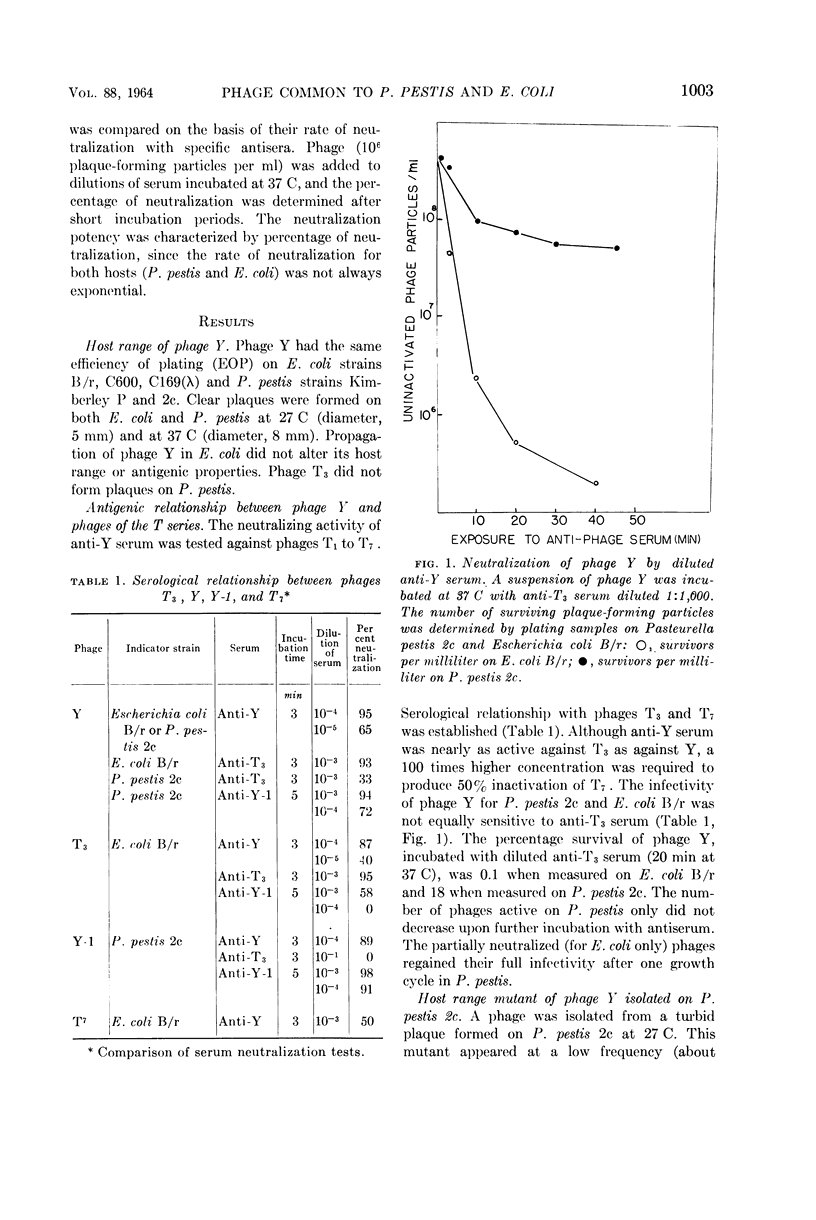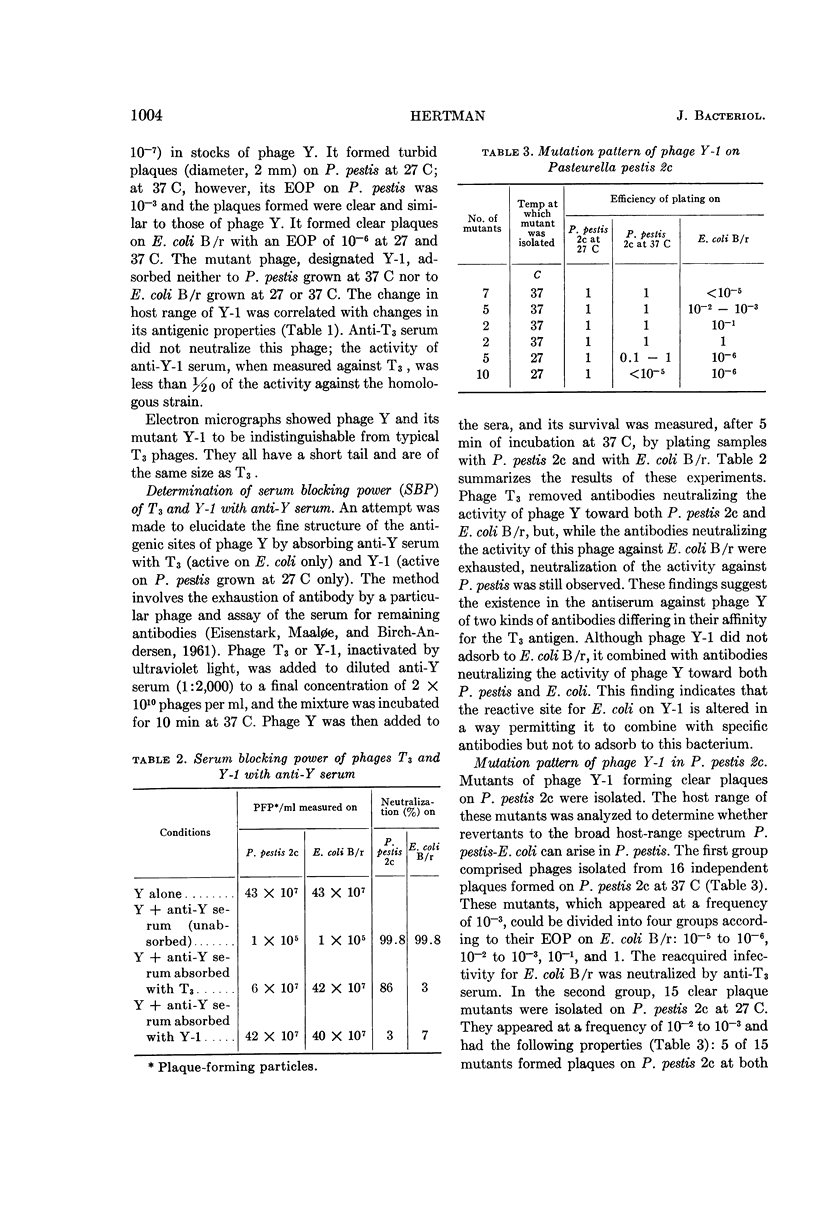Abstract
Hertman, I. (Israel Institute for Biological Research, Ness Ziona, Israel). Bacteriophage common to Pasteurella pestis and Escherichia coli. J. Bacteriol. 88:1002–1005. 1964.—Phage Y of Pasteurella pestis and phage T3 of Escherichia coli are serologically related and have common bacterial hosts. Anti-Y serum neutralizes the homologous phage and phage T3 to a similar extent. Anti-Y serum, absorbed with T3, still neutralizes the activity of phage Y for P. pestis, but not the activity for E. coli B/r. A mutant of phage Y was isolated from turbid plaques formed on P. pestis at 27 C. This mutant infected P. pestis only if this organism had been grown at 27 C; it lost its infectivity towards E. coli B/r and was not neutralized by anti-T3 serum. From this phage, additional mutants were isolated on P. pestis, some of which were infective for both P. pestis and E. coli B/r and some of which remained infective for P. pestis only. The reacquired infectivity for E. coli B/r was neutralized by anti-T3 serum. The name T3P is suggested for phage Y.
Full text
PDF



Selected References
These references are in PubMed. This may not be the complete list of references from this article.
- EISENSTARK A., MAALOE O., BIRCH-ANDERSEN A. Genetic variants of phage T3. Virology. 1961 Sep;15:56–64. doi: 10.1016/0042-6822(61)90077-0. [DOI] [PubMed] [Google Scholar]
- HERTMAN I., BEN-GURION R. A study on pesticin biosynthesis. J Gen Microbiol. 1959 Aug;21:135–143. doi: 10.1099/00221287-21-1-135. [DOI] [PubMed] [Google Scholar]
- LANNI F. Immunogenetic dissection of the T5 bacteriophage tail. Science. 1958 Oct 10;128(3328):839–840. doi: 10.1126/science.128.3328.839. [DOI] [PubMed] [Google Scholar]
- Lazarus A. S., Gunnison J. B. The Action of Pasteurella pestis Bacteriophage on Strains of Pasteurella, Salmonella, and Shigella. J Bacteriol. 1947 Jun;53(6):705–714. [PMC free article] [PubMed] [Google Scholar]
- MARTIN G., JACOB F. [Transfer of the sex episome from Escherichia coli to Pasteurella pestis]. C R Hebd Seances Acad Sci. 1962 May 14;254:3589–3590. [PubMed] [Google Scholar]
- SALK J. E., LAURENT A. M. The use of adjuvants in studies on influenza immunization. I. Measurements in monkeys of the dimensions of antigenicity of virus-mineral oil emulsions. J Exp Med. 1952 May 1;95(5):429–447. doi: 10.1084/jem.95.5.429. [DOI] [PMC free article] [PubMed] [Google Scholar]
- SMITH D. A., BURROWS T. W. Phage and bacteriocin investigations with Pasteurella pestis and other bacteria. Nature. 1962 Jan 27;193:397–398. doi: 10.1038/193397a0. [DOI] [PubMed] [Google Scholar]
- STOCKER B. A. Bacteriophage and bacterial classification. J Gen Microbiol. 1955 Apr;12(2):375–381. doi: 10.1099/00221287-12-2-375. [DOI] [PubMed] [Google Scholar]


